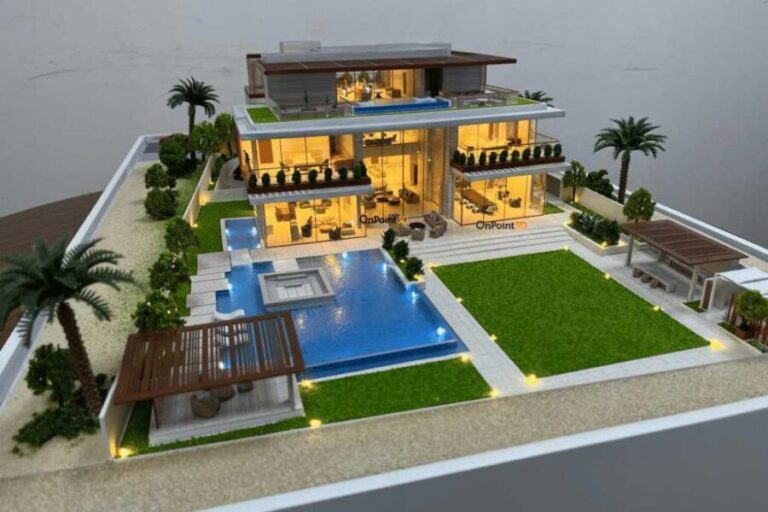
Architectural model makers play a vital role in effectively communicating complex designs to clients, stakeholders, and collaborators. Their ability to translate abstract concepts into tangible, visually compelling models bridges the gap between imagination and realization. Below are several key strategies that architectural model makers in Dubai employ to communicate designs effectively:
Detail and craftsmanship:
Attention to detail is paramount in architectural models. Model makers use their expertise in craftsmanship to incorporate intricate details such as facade textures, landscaping features, interior furnishings, and structural elements. These details improve the realism of the model, providing an inclusive representation of the architect’s vision and design intent.
Materiality and texture:
The choice of materials in model making significantly influences how designs are perceived. Model makers select materials that mimic those intended for the final construction, whether it’s wood, metal, glass, or sustainable alternatives. Textures and finishes are carefully applied to simulate the look and feel of these materials, adding depth and authenticity to the model.
Contextualization:
Models are often contextualized within their surroundings to demonstrate how they interact with the built environment. This includes creating miniature lands, streetscapes, and neighboring buildings. Contextualization helps stakeholders visualize the impact of the design on its surroundings and assess its compatibility with the existing urban fabric.
Lighting and presentation:
Lighting plays a vital role in highlighting key features of the design and creating ambiance within the model. Model makers use various lighting techniques to simulate natural daylight, artificial lighting effects, and shadows. Effective lighting improves the overall presentation, emphasizing architectural features and guiding viewers’ attention to specific design elements.
Iterative prototyping:
Architectural models often undergo iterative prototyping, where multiple versions are created to explore different design iterations or client feedback. This iterative process allows stakeholders to visualize and compare various design options, facilitating informed decision-making and refining the final design.
Architectural model makers effectively communicate designs through meticulous attention to scale, detail, materiality, and context. By combining traditional craftsmanship with innovative technologies, they create visual representations that convey architectural concepts and also inspire confidence and enthusiasm among clients and stakeholders. Their role in the design process is vital, bridging imagination with practical realization and ensuring successful project outcomes.





